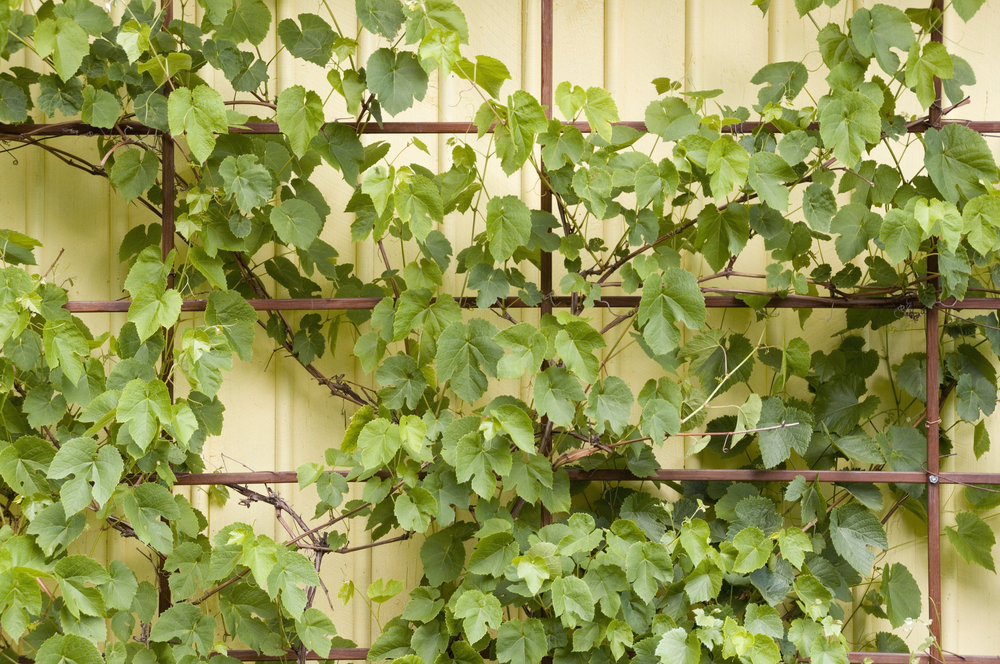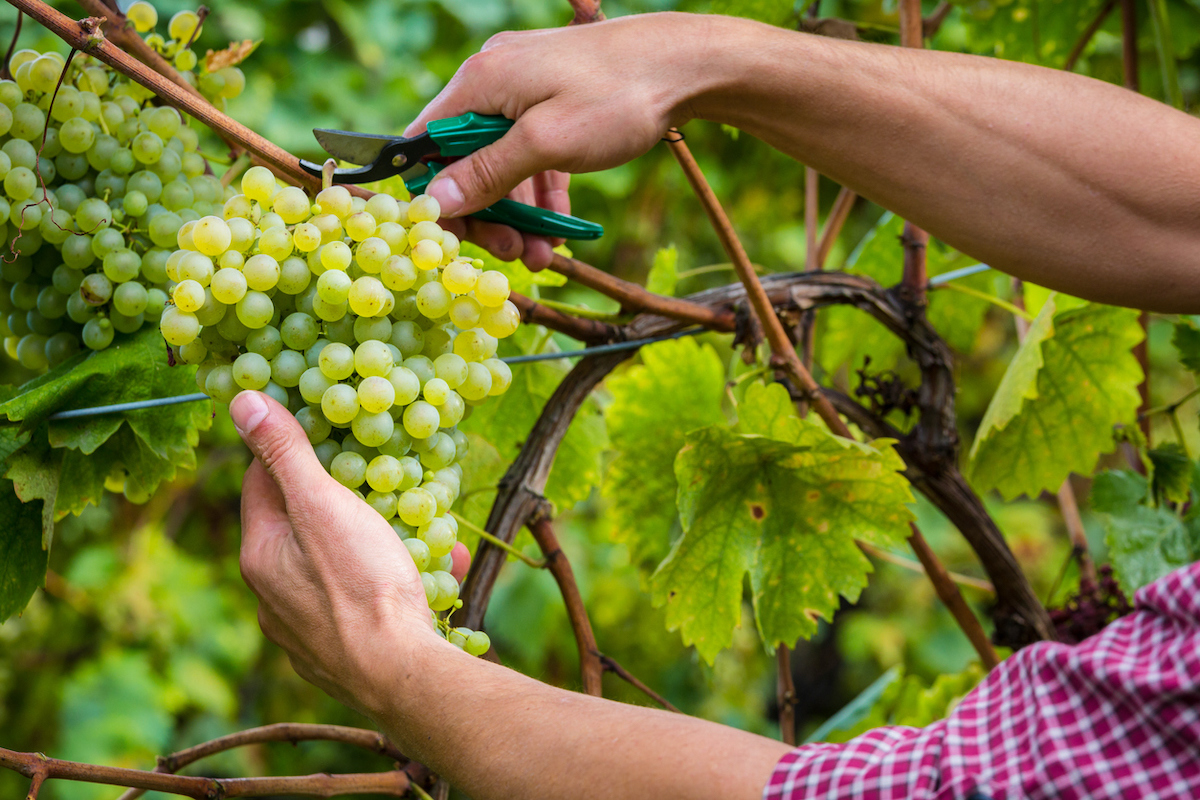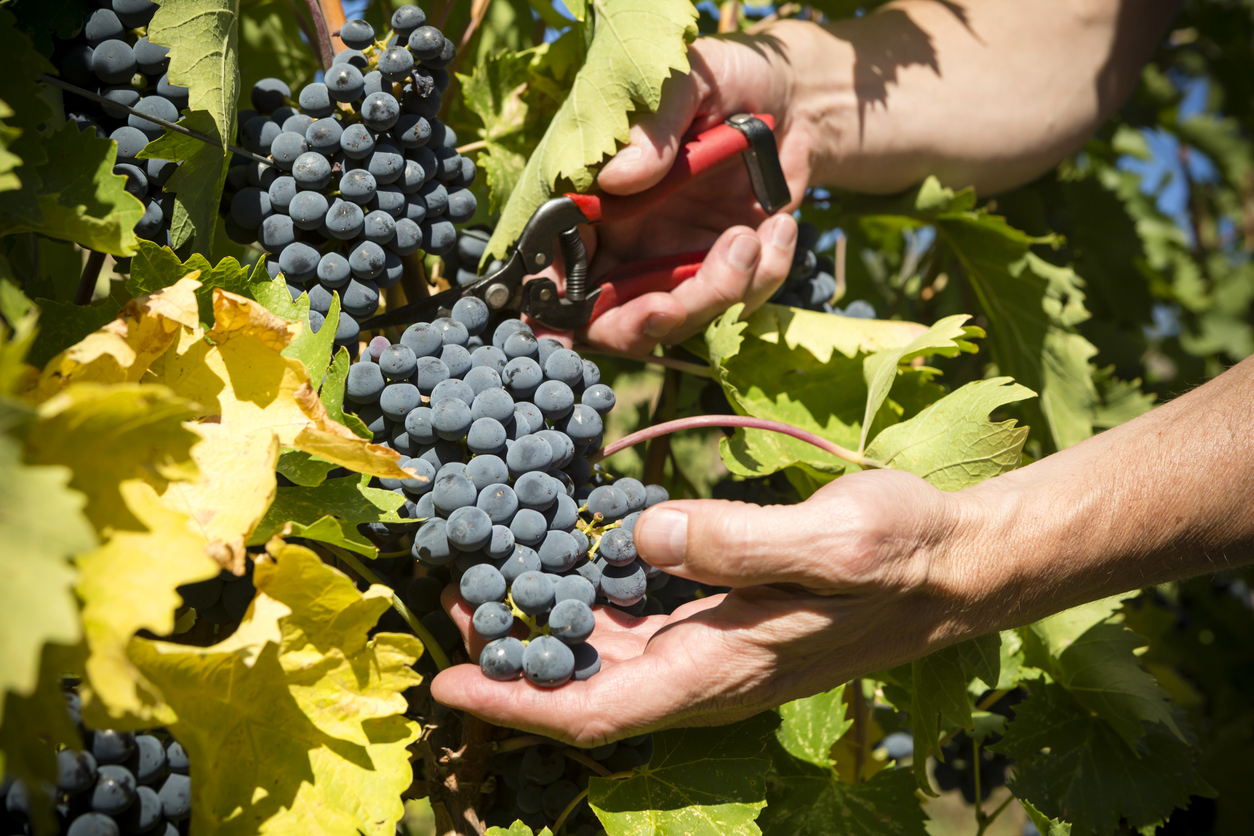

We may earn revenue from the products available on this page and participate in affiliate programs. Learn More ›
Grapevines are versatile and beautiful plants to grow in a home garden. Their plentiful vines produce crisp grapes for eating, juicing, and making jams, jellies, and wine. With draping leaves and trailing vines, they also add a lovely ornamental plant to your garden’s design.
In the right conditions, grapevines offer an excellent return for backyard gardeners. They provide fruit within a few years of planting and have the potential to yield fruit for decades. Read on to learn how to grow grapes in your own backyard for snacking, winemaking, and preparing jams and jellies.
Tools & Materials
Bobvila.com may earn a commission from purchases made through these links.
STEP 1: Select a grape type.
When choosing a grape type, consider the growing conditions and fruit’s intended use. Home gardeners usually choose from American, European, French-American hybrids, or muscadine grapes. Under each grape type, a range of varieties serve best as table grapes, or for jellies, juicing, or wine-making. To find the best pick, choose a variety that thrives in your USDA growing zone.
American grapes tend to be hardier and better able to handle colder conditions, while European grapes grow best in warm, dry conditions. Hybrid varieties typically take some features from both types. Muscadine grapes are native to the southern United States and do best in warm, humid climates.
STEP 2: Select a planting date and site.
Make sure to plan for adequate spacing if growing multiple vines. Grapevines require spacing of about 6 to 10 feet apart for most types, and 16 feet apart for muscadines. Their vines also need a path to grow upward, so they need support from a stake, fence, trellis, or arbor. Ensure that the support is in place at the time of planting.
The ideal planting site should have full sun exposure and loose, deep, and well-draining soil. Early spring is the best time to plant dormant grapevines. Once you’re ready to plant, look for one-year-old, dormant, bare-root grapevines from a reputable garden nursery.
RELATED: The Fastest-Growing Vegetables, Fruits, and Herbs for Impatient Gardeners
STEP 3: Soak the roots and plant in soil.
Before planting, soak the grapevine roots in water for 1 to 3 hours. Make sure to plant the roots within 48 hours after soaking. Prepare the planting site by loosening the soil and removing debris like weeds, roots, and rocks.
Use a trowel or shovel to dig a hole for each grapevine that measures about 12 inches wide and 12 inches deep. Fill the hole with 4 inches of loose soil. Remove any broken roots and place the plant into the hole, along with 6 inches of soil. Tamp down the soil, then fill the remainder of the hole without tamping. Water the grapevine right after planting.
STEP 4: Train vines with a trellis.

As they grow, grapevines can become heavy. A sturdy trellis offers ample support and looks lovely in a garden. Training grapevines involves manipulating and removing canes to guide the vine’s growth.
In the first year, it’s most important to create a strong root system. After planting, select the intended number of permanent trunks for each vine. Most home gardeners select a single cane—the sturdier the better. Remove all the other growth, pruning back the stem to two or three buds. Tie the trunk and the vines to the trellis as the plant grows.
STEP 5: Prune and harvest grapes.

Pruning is important for an ample fruit yield and for maintaining the appearance of the vines. Effective pruning can mean the difference between a mess of tangled stems or an arbor of plump fruit. Pruning is best done in late winter when the plant is dormant.
Many grapevines will produce fruit within 1 to 3 years of planting. Most grape varieties are ready to harvest in the late summer or early fall. When grapes are ripe, they should be juicy, rich in color, and have a full flavor. Taste the fruit before harvesting—grapes will not continue to ripen once picked, so take care not to harvest them prematurely.
Grapes grow on new, year-old shoots, not older branches. To prepare the vine for the next growing season, prune the canes that produced fruit the previous year, cutting these year-old canes back to two to six buds.
RELATED: The Best Kitchen Appliance Brands

Grapevines appeal to backyard gardeners for many reasons. With some sunshine and annual pruning, their vines produce delicious grapes for eating, juicing, and making jams and wines. They also double as an ornamental plant, turning a backyard trellis or arbor into a shady escape. Following these steps, you can enjoy charming trailing grapevines and the plump fruits of your labor—crisp and flavorful grapes that you can turn into a variety of scrumptious recipes.
